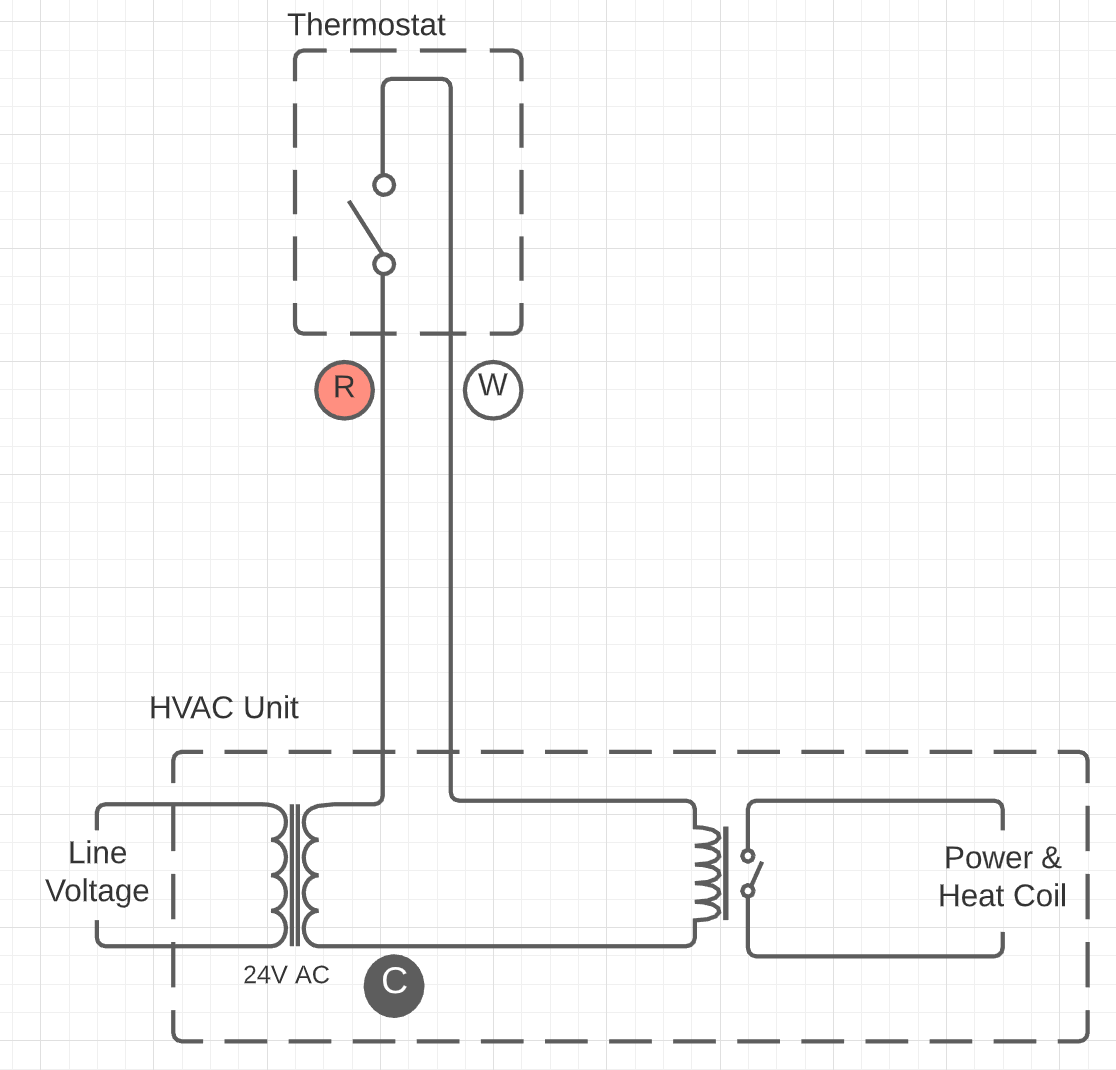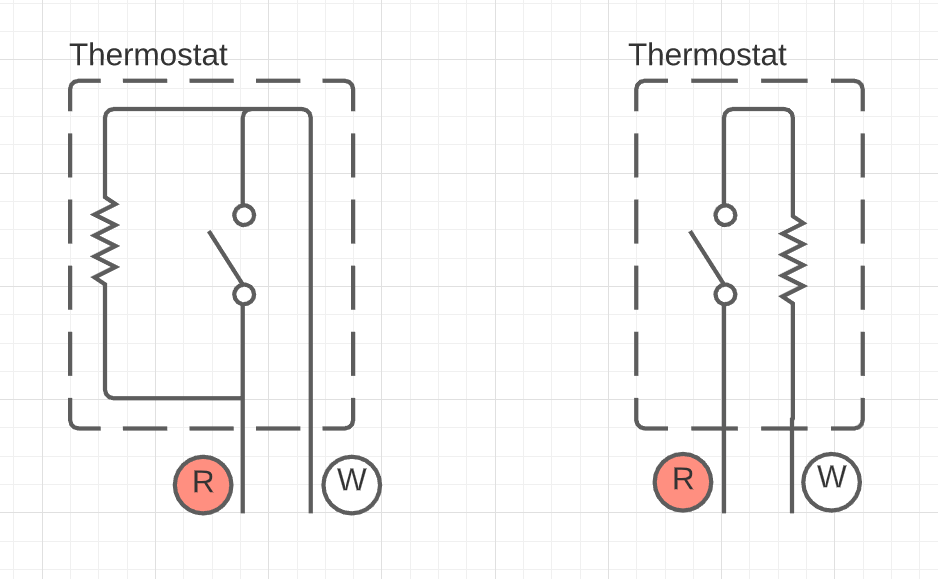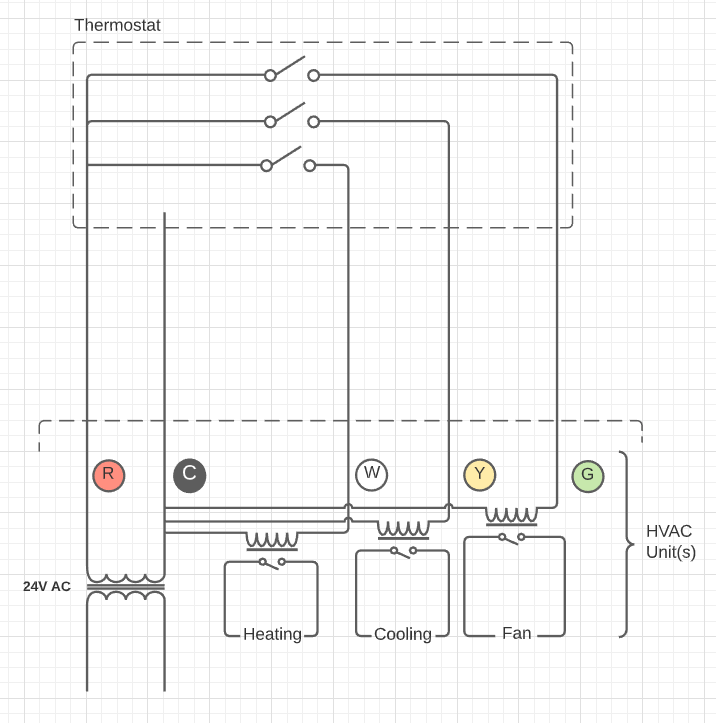In my previous apartment, a mid-70s honeywell bi-metallic thermostat controlled the 24V circuit connected to the oil-filled baseboard electrical heat. And like many systems of that era, it consisted of only a two-wire configuration - red and white wires.

For many HVAC system installation, only the R & W wires were run from the heating unit to through the wall to the thermostat.; and since it wasn't needed by mechanical thermostats, the common wire wasn't. It probably also saved on building construction costs. However, it was a challenge for thermostats with electronics that required a power source.

Two techniques have been used to circumvent this limitation. If the resistive load of the electronics is placed in parallel with the thermostatic switch (left), it could provide enough current to power the electronics as long as it wasn't sufficient to trigger the heating relay. The other possibility is if the resistive load of a battery charging circuit is in series with the thermostatic switch (right) then during the heating cycle enough power could be stored to run the electronics while not heating. Neither are great solutions as the former solution is challenging given that the relay's current draw is not known. And the latter relies on enough heating cycles to charge a large enough battery to sustain the electronics in between heating cycles.
I imagine that manufacturers decided to avoid this kind of challenge and focus on home automation in newer construction where common wires are more often available. For older constructions, the recommendation is to supplement the two-wire system with an external 24V AC power supply.
The one exception is the Nest thermostat; it is based on the in-series battery charging design with a micro-usb charging port as a backup in case the battery dies between heating cycles. And with its simple user interface, I've always been a fan of the Nest thermostat so I was happy to install it.
From research, this seemed like a more "modern" (after 1980s) wiring for a combined hot-air and A/C unit that shared common ductwork:

If the heating and A/C units were separate -- such as a baseboard water heater and A/C ducts -- the wiring configuration might have two 24V AC transformers with an RH from the heating system and an RC from the cooling system. Other systems also offered a second heating or cooling stage. For common setups, check out this extensive guide.
Discussions
Become a Hackaday.io Member
Create an account to leave a comment. Already have an account? Log In.